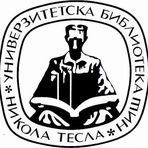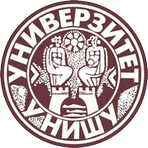Title
Voice quality in cross-language forensic speaker comparison
Creator
Tomić, Kristina D., 1989-
CONOR:
51984137
Copyright date
2024
Object Links
Select license
Autorstvo-Nekomercijalno-Bez prerade 3.0 Srbija (CC BY-NC-ND 3.0)
License description
Dozvoljavate samo preuzimanje i distribuciju dela, ako/dok se pravilno naznačava ime autora, bez ikakvih promena dela i bez prava komercijalnog korišćenja dela. Ova licenca je najstroža CC licenca. Osnovni opis Licence: http://creativecommons.org/licenses/by-nc-nd/3.0/rs/deed.sr_LATN. Sadržaj ugovora u celini: http://creativecommons.org/licenses/by-nc-nd/3.0/rs/legalcode.sr-Latn
Language
Serbian
Cobiss-ID
Theses Type
Doktorska disertacija
description
Datum odbrane: 10.01.2025.
Other responsibilities
Academic Expertise
Društveno-humanističke nauke
University
Univerzitet u Nišu
Faculty
Filozofski fakultet
Group
Departman za anglistiku
Alternative title
Kvalitet glasa u međujezičnoj forenzičkoj komparaciji govornika
Publisher
[K. Tomić]
Format
287 str.
description
Biografija autora: list 287
Bibliografija: str. 216-265
description
Linguistics, Phonetics, Forensic Phonetics
Abstract (en)
The aim of the present research is to test the hypothesis that the anatomy of the vocal tract outweighs the linguistic factors in determining individual voice quality for the purpose of confirming that the acoustical measures of VQ could be used in cross-language forensic speaker comparison. The study consists of two perceptual experiments and evaluation of acoustic correlates of VQ under the likelihood ratio framework in same-language and cross-language sample pairs. The corpus for the research was created by recording fifty native speakers of Serbian while speaking Serbian and English over a mobile phone. In the first experiment, four expert listeners rated twenty speakers according to a truncated version of the Vocal Profile Analysis protocol (Laver et al., 1981). The results showed that within-speaker vocal profiles across Serbian and English exhibit lower variability than between-speaker profiles within each language, respectively. In addition, it was found that phonatory settings are more responsible for vocal profile similarity than articulatory settings. In the second experiment, sixty Serbian naïve listeners performed speaker discrimination and assessed voice similarity of same- and different-speaker pairs within and across languages. The study confirmed the existence of the “language familiarity effect” as listeners were able to discriminate speakers with higher accuracy in the same-language than in the cross-language context (92.68% vs 86.22%). Furthermore, while same-speaker samples were rated as slightly less similar in the cross-language context (8.45 vs 8.79), different-speaker samples have a notably higher similarity score in the language-mismatching than in the
language-matching condition (4.43 vs 3.61). Likelihood ratio assessment revealed that among the best performing parameters in cross-language comparison are CPP, HNR35, HNR25, H1*-A3*, LTF3 and H1*H2*, with EER ranging between 20%-24% and Cllr between 0.59 and 0.69. In combination, articulatory and phonatory parameters achieved an EER of 1.59% and Cllr of 0.06 in the cross-language context.
Authors Key words
kvalitet glasa, analiza glasovnog profila, fonacija, artikulacija, dugoročni formanti, škripav glas, zadihan glas, komparacija govornika, verovatnoća, forenzička fonetika
Authors Key words
voice quality, VPA, phonatory settings, articulatory settings, long-term formants, creaky voice, breathy voice, speaker comparison, likelihood ratio, forensic phonetics
Classification
811.111'342:811.163.41'342(043.3)
81'342(043.3)
Subject
H 004, H 350, H 351
Type
Tekst
Abstract (en)
The aim of the present research is to test the hypothesis that the anatomy of the vocal tract outweighs the linguistic factors in determining individual voice quality for the purpose of confirming that the acoustical measures of VQ could be used in cross-language forensic speaker comparison. The study consists of two perceptual experiments and evaluation of acoustic correlates of VQ under the likelihood ratio framework in same-language and cross-language sample pairs. The corpus for the research was created by recording fifty native speakers of Serbian while speaking Serbian and English over a mobile phone. In the first experiment, four expert listeners rated twenty speakers according to a truncated version of the Vocal Profile Analysis protocol (Laver et al., 1981). The results showed that within-speaker vocal profiles across Serbian and English exhibit lower variability than between-speaker profiles within each language, respectively. In addition, it was found that phonatory settings are more responsible for vocal profile similarity than articulatory settings. In the second experiment, sixty Serbian naïve listeners performed speaker discrimination and assessed voice similarity of same- and different-speaker pairs within and across languages. The study confirmed the existence of the “language familiarity effect” as listeners were able to discriminate speakers with higher accuracy in the same-language than in the cross-language context (92.68% vs 86.22%). Furthermore, while same-speaker samples were rated as slightly less similar in the cross-language context (8.45 vs 8.79), different-speaker samples have a notably higher similarity score in the language-mismatching than in the
language-matching condition (4.43 vs 3.61). Likelihood ratio assessment revealed that among the best performing parameters in cross-language comparison are CPP, HNR35, HNR25, H1*-A3*, LTF3 and H1*H2*, with EER ranging between 20%-24% and Cllr between 0.59 and 0.69. In combination, articulatory and phonatory parameters achieved an EER of 1.59% and Cllr of 0.06 in the cross-language context.
“Data exchange” service offers individual users metadata transfer in several different formats. Citation formats are offered for transfers in texts as for the transfer into internet pages. Citation formats include permanent links that guarantee access to cited sources. For use are commonly structured metadata schemes : Dublin Core xml and ETUB-MS xml, local adaptation of international ETD-MS scheme intended for use in academic documents.


